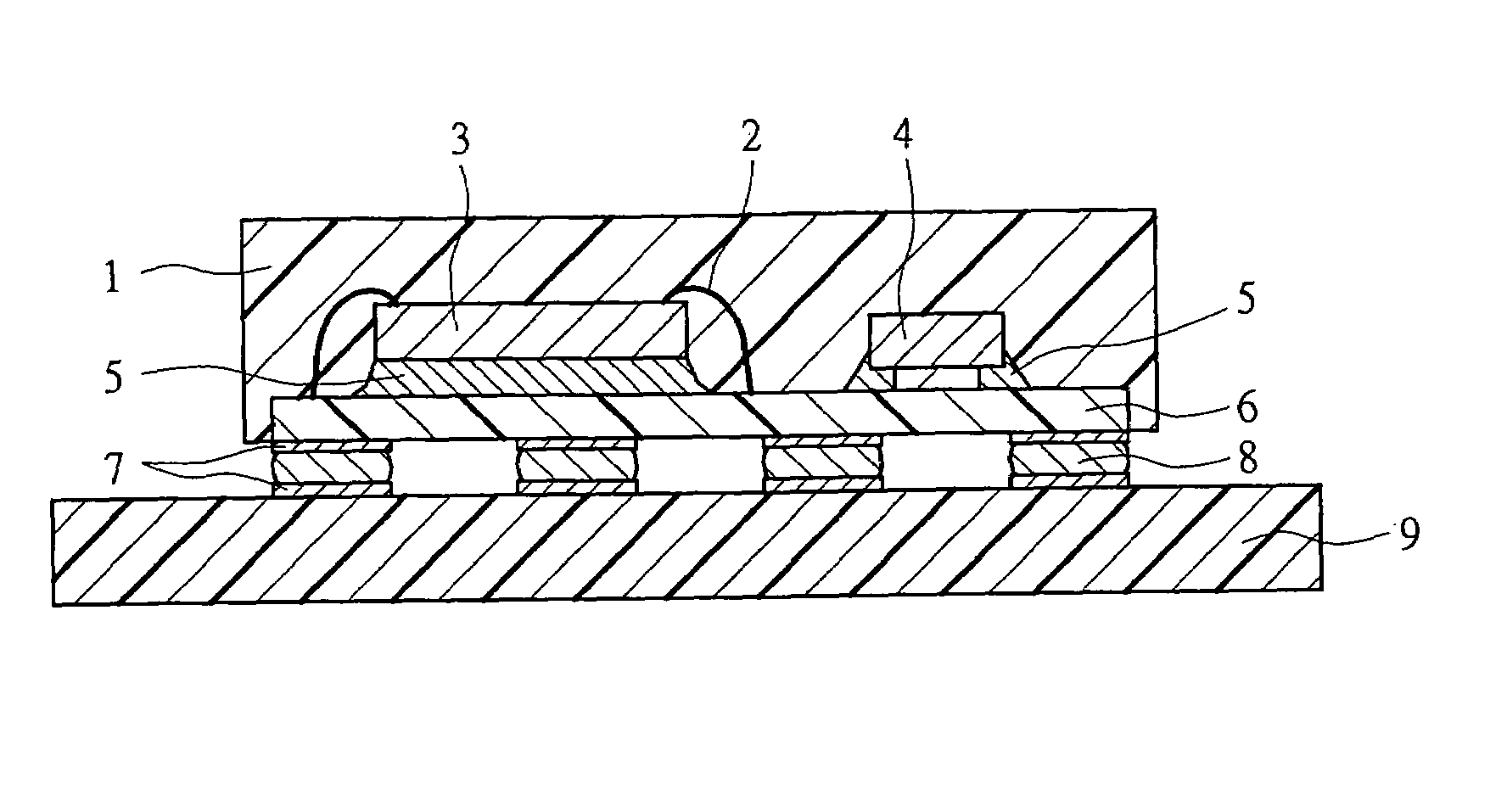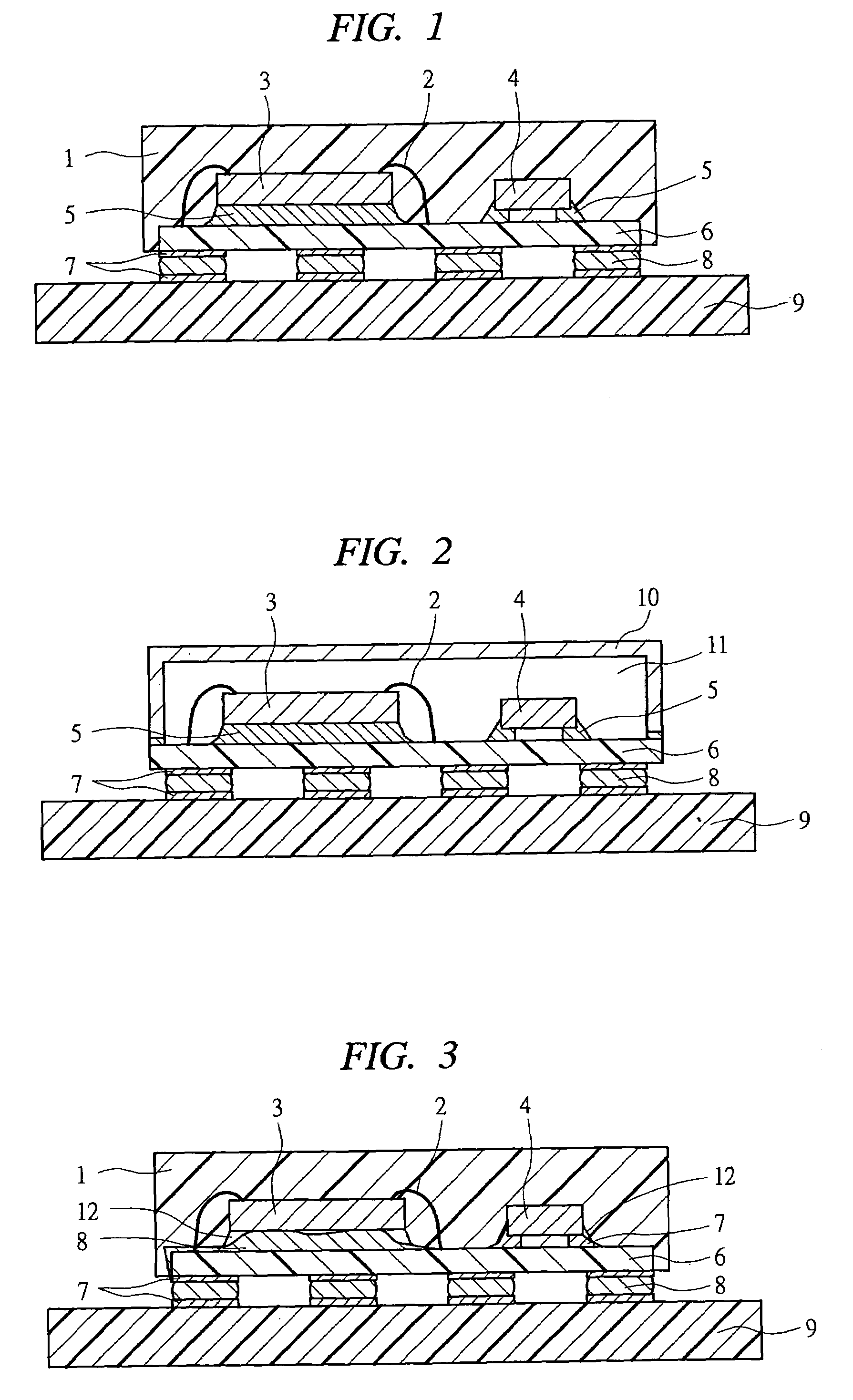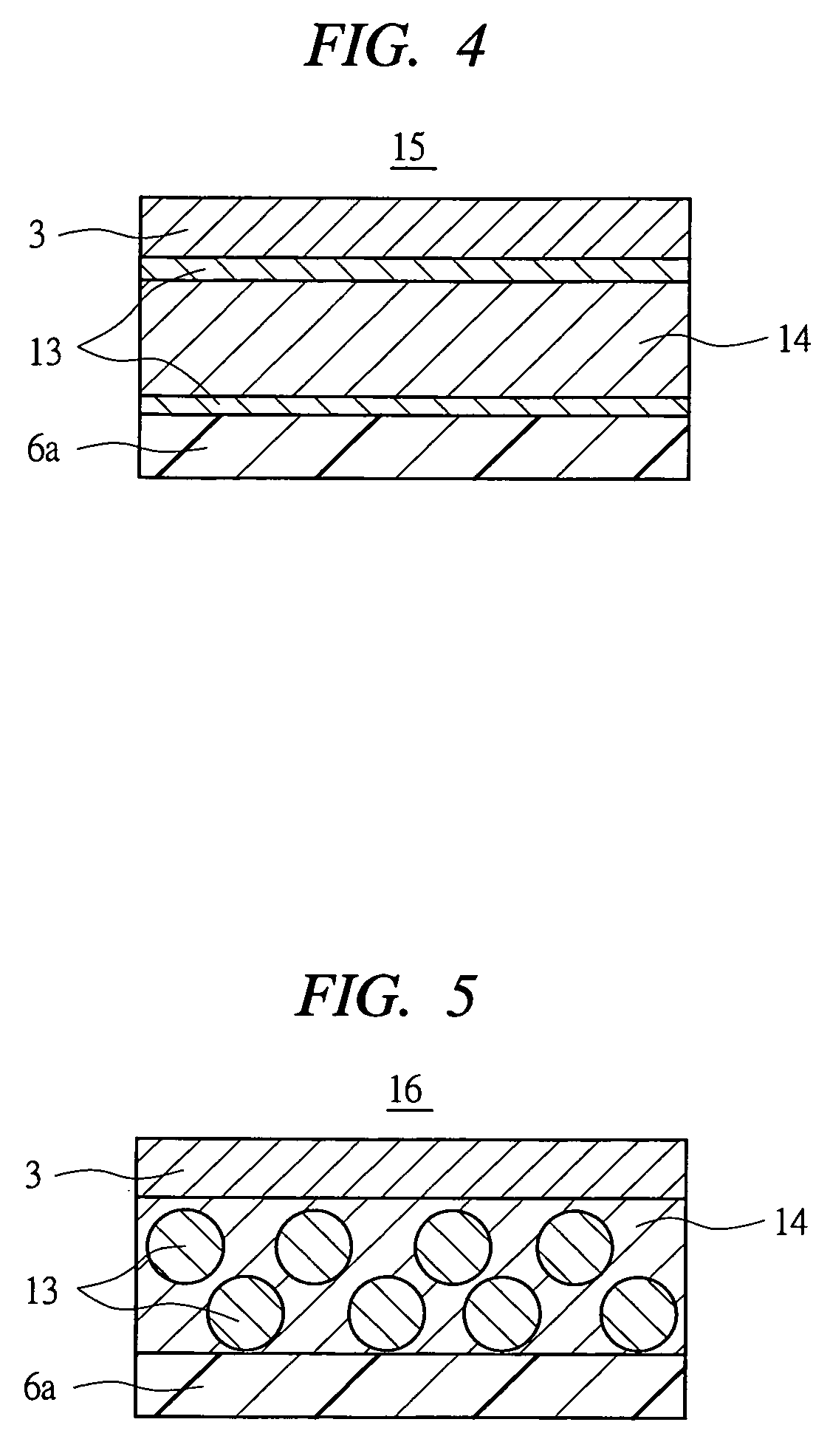Semiconductor device and manufacturing method thereof
a manufacturing method and technology for semiconductor devices, applied in manufacturing tools, welding/cutting media/materials, manufacturing tools, etc., can solve the problems of heat damage to be destroyed to increase the reactive surface, and print boards may be damaged. , to achieve the effect of increasing the reactive surfa
- Summary
- Abstract
- Description
- Claims
- Application Information
AI Technical Summary
Benefits of technology
Problems solved by technology
Method used
Image
Examples
first embodiment
[0049]FIG. 8 shows a sectional view of a semiconductor device according to a first embodiment of the present invention.
[0050]The semiconductor device according to the present embodiment is applied to, for example, a power semiconductor module, and comprises a semiconductor element 3, a passive element (passive component) 4, a printed board (module board) 6a connecting the semiconductor element 3 and the passive element 4, wires 2 for wire-bonding between an electrode of the semiconductor element 3 and an electrode of the printed board 6a, and a mold resin 1 for sealing the semiconductor module, etc. This semiconductor module is mounted on the printed board 9, thereby being incorporated in various devices.
[0051]The process of manufacturing this semiconductor module will be described below. For example, when the internal connection of the semiconductor module is made by a structure of the connecting portion 17 of FIG. 7 as described above, a layer of a high-melting metal 20 and a laye...
second embodiment
[0058]A semiconductor device according to a second embodiment of the present invention has the same constitution as that shown in the sectional view of FIG. 8 as described in the first embodiment but is different from it in that the structure of the above-described connection portion 15 in FIG. 4 is applied to the internal connection of the semiconductor module. Note that the case where the above-described structure of the connection portion 16 in FIG. 5 is applied is also the same.
[0059]A process of manufacturing this semiconductor module will be described below. When the internal connection of the semiconductor module is carried out by the above-described structure of the connection portion 15 in FIG. 4, a compound foil 30 shown in FIG. 12 is supplied onto the printed board 6a. This compound foil 30 is produced by providing, on surfaces of a layer of a high-melting metal 14, layers of low-melting solder 21 made of Pb-free solder with a melting point of 260° C. or lower. If the hig...
PUM
| Property | Measurement | Unit |
|---|---|---|
| melting point | aaaaa | aaaaa |
| thicknesses | aaaaa | aaaaa |
| melting point | aaaaa | aaaaa |
Abstract
Description
Claims
Application Information
 Login to View More
Login to View More - R&D
- Intellectual Property
- Life Sciences
- Materials
- Tech Scout
- Unparalleled Data Quality
- Higher Quality Content
- 60% Fewer Hallucinations
Browse by: Latest US Patents, China's latest patents, Technical Efficacy Thesaurus, Application Domain, Technology Topic, Popular Technical Reports.
© 2025 PatSnap. All rights reserved.Legal|Privacy policy|Modern Slavery Act Transparency Statement|Sitemap|About US| Contact US: help@patsnap.com



